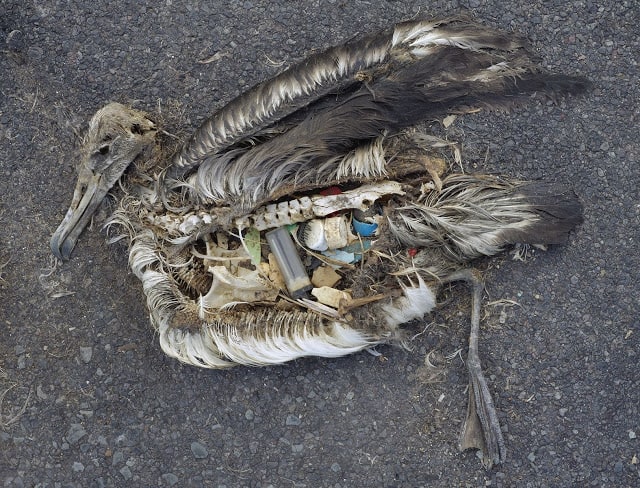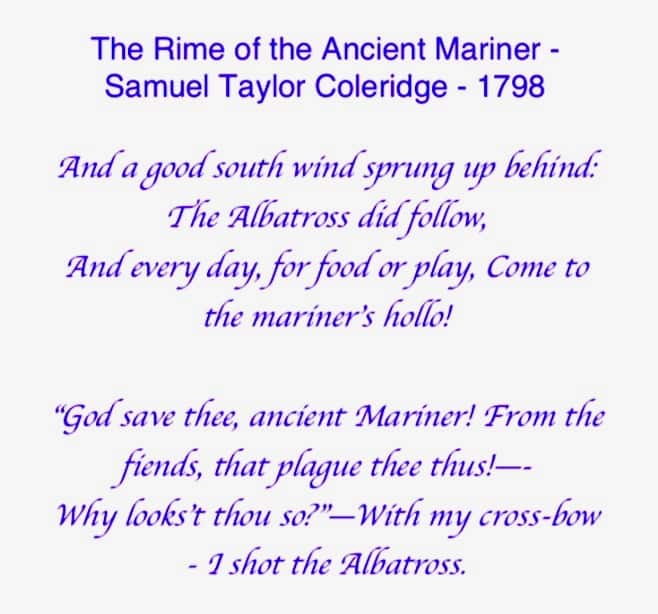This is the story of the “Grey-Head.” It’s but a single member of a large family of albatross called Diomedeidae. Major research studies published recently, warn of twin threats facing the already-endangered bird. Each is different. Each is insidious.

In general, the albatross carries higher burdens of mercury in its body than any other bird on earth. (In the marine environment, only some marine mammals carry more.)
Still, even those who measured levels of mercury in “Grey-Heads” at their largest breeding colony on South Georgia Island recently, must have been shocked by what they found.

They discovered the highest amounts of that contaminant ever recorded in that species anywhere – a threefold increase over twenty-five-years.
Mercury is described as a “pervasive environmental contaminant that can negatively impact humans and wildlife.” While some of it originates in nature, much probably comes from distant gold mines or coal-fired power plants. In gaseous form, it can travel long-distances through the air. As it settles onto the marine environment, it becomes even more toxic as it moves up through the food web.
The birds then ingest it in their prey. It doesn’t kill them outright. But it reduces their ability to reproduce. Adult males on South Georgia who sired the fewest chicks, also had the highest levels of mercury in their bodies.
The “Grey-Head” finds no refuge in the remoteness of its home
South Georgia is a lonely spot, far out in the Atlantic, east of South America’s southernmost tip. (The general area is sometimes referred to as “The Southern Ocean” or “sub-Antarctica.”)
In 2003 and 2004, the last available count, there were almost 48 thousand pair breeding on the island – about half of their entire world population.
While that may sound like a lot, their numbers have been in decline for over thirty years. And now, they’re listed by the World Conservation Union as endangered.
The lead author of the study, William Mills of the British Antarctic Survey, tells PinP in an email, “Trends that we found could be due to birds shifting their diets or foraging habitats to more contaminated prey or regions.”
In a paper published by The Royal Society in December, Dr. Mills’ team concludes, “These results provide key insights into the drivers and consequences of Hg (mercury) exposure in this globally important albatross population.
Mercury not the only threat
Research published last spring in the journal Environment International finds, “Grey-headed albatrosses are exposed to large and increasing amounts of plastics transported from coastal South America in the Subantarctic Current, or discarded from vessels and circulating in the South Atlantic Gyre.

It’s a horrible tale, long illustrated by images of the birds (and many other forms of marine life) becoming entangled in fish-nets as “biocatch.” They also mistake much of the plastic as food. While the adults can sometimes regurgitate it, the chicks cannot and die.
“Marine plastics are a major, trans-boundary animal-welfare and environmental issue,” concludes the report, “that needs to be addressed by much-improved waste-management practices and compliance-monitoring both on land and on vessels in the south Atlantic.”
The albatross…no “ordinary” bird.
The albatross is among the largest of all the flying birds. Its wingspan can be as wide as a basketball player is tall. Even its lifespan – up to eight decades – is comparable to a human’s.
It has the remarkable ability of spending the first few years of its long life never touching land – just soaring above the ocean and resting only on the water. It’s such an efficient and effortless flyer – it rarely needs to even flap its wings.
Immortalized over the ages as an omen of either good or ill.
Some interpret “The Rime,” below, as a commentary on man’s inhumanity toward nature. It was written centuries ago. But is the message really that different all these years later? l.p.
Lead photo: The grey-headed albatross (Thalassarche chrysostoma) – Photo by Lieutenant Elizabeth Crapo, NOAA.
What you can do
Support ‘Fighting for Wildlife’ by donating as little as $1 – It only takes a minute. Thank you.
Larry Powell
I’m a veteran eco-journalist living in Shoal Lake, Manitoba, Canada. I have a life-long love of wildlife & natural places. After working for radio and TV stations for about 30 years, I've turned to science writing as a freelancer specializing in the Earth Sciences. I’m a member of the Science Writers & Communicators of Canada and the American Association for the Advancement of Science. I’m authorized to receive embargoed material through the Science Media Centre of Canada, the Royal Society, NatureResearch and the World Health Organization. This allows me advance access to important, peer-reviewed research often warning of habitat loss and the threat of extinction facing many wild species, usually thanks to human intrusion and intervention by the hand of man. They then often become "hot-off-the-press" stories which are ready to publish the moment the embargoes are lifted. I publish www.PlanetInPeril.ca (PinP) "Where Science Gets Respect." I own professional photographic gear and am sometimes able to enhance my stories with my own images.
- Web |
- YouTube |
- More Posts(14)


Leave a Reply